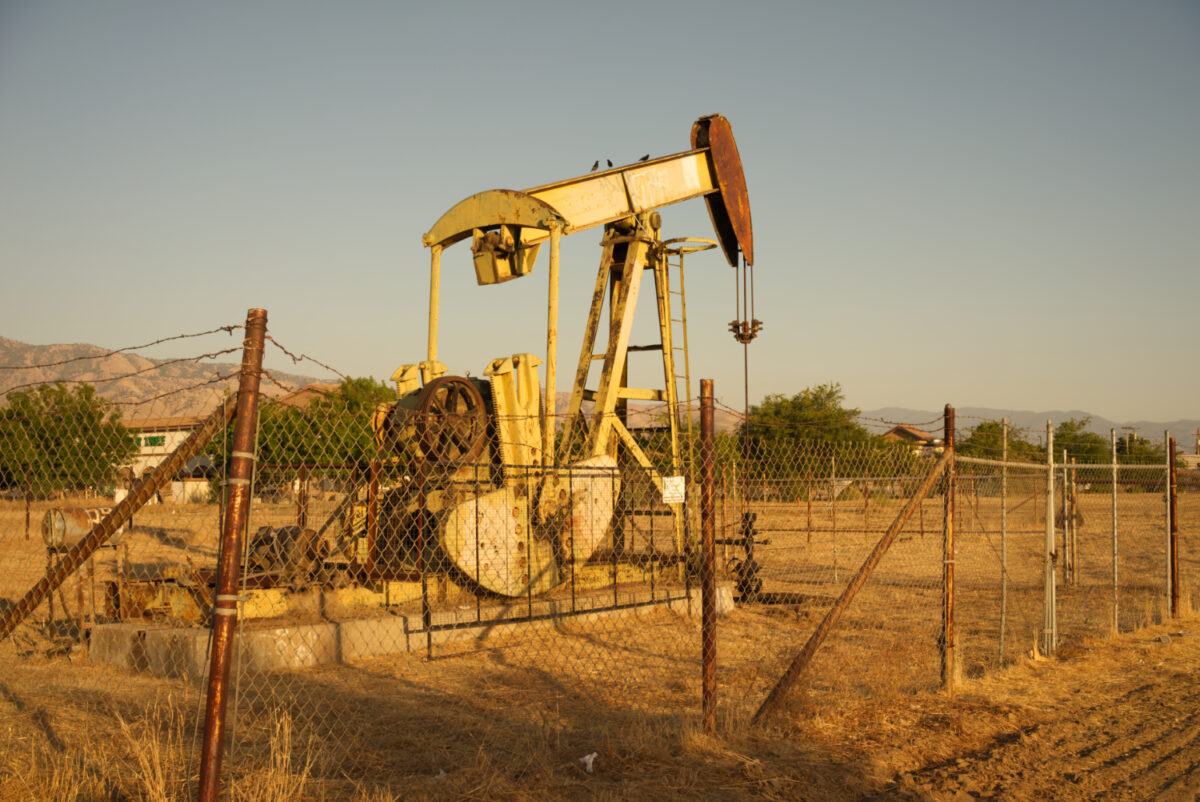Originally published on Global Voices

Oil well, Arvin, California, May 31. 2023. Photo by Ivan Sigal (CC BY 4.0)
This article is part of a series by J. Nathan Matias for a 500+ mile bicycle ride in June 2023 that is raising funds for Rising Voices, Global Voices’ endangered/Indigenous language program, and the Central California Environmental Justice Network. Donate to the initiative here.
When Francisco Gonzales moved to the town of Arvin, California from the Los Angeles suburbs in 2005, he was captivated by the mountain vistas, the green fields, and orange trees that surround the town. “I thought it would clean,” he said, pointing to the small housing development where he had invested his retirement savings after decades working as a handyman. Then Francisco points to the oil derrick across the street from him and shrugs. Methane and other gasses. Even standing just a hundred feet from the well, I already have a migraine from the fumes.

Francisco Gonzalez, Arvin, California, May 31, 2023. Photo by Ivan Sigal (CC BY 4.0)
Today is the first day of a 550-plus mile bicycle storytelling journey that Ivan Sigal and I are taking from Bakersfield to Sacramento and out to the Bay following the route of the 1966 Farmworkers March. Standing in a crossroads town in front of an ailing oil well with a delinquent owner, I can’t help but feel like I’m standing at the junction of lost futures, past hopes, and deferred promises.
If you’ve heard of Arvin California, it’s probably through John Steinbeck’s novel “The Grapes of Wrath”, where Weedpatch Camp was an actual place, known as the Federal Migratory Camp. When the Joad family arrives in California fleeing climate disaster in Oklahoma, Weedpatch camp becomes a brief waypoint in their search for survival and a decent life.
Today, people visit Weedpatch Camp for two reasons. Tourists like us visit the historical site for a glimpse of migrant housing from the Great Depression. Behind locked gates, an indifferent cat strolls through the ghosts of the Dust Bowl like T. S. Eliot’s Bustopher Jones, cat about town. Almost 90 years later, the camp still provides housing for migrant farm workers, offering 88 two-to-four-bedroom homes administered by Kern County.
Listening to Francisco talk about faraway oil well owners, it’s hard not to think of Steinbeck, writing in 1939 about land and power in the Central Valley: “Owners no longer worked on the farms. They farmed on paper. They forgot the land, the smell, the feel of it, and remembered only that they owned it, only what they gained and lost by it.”

Weedpatch Camp historical site, Arvin, California, May 31, 2023. Photo by Ivan Sigal (CC BY 4.0).

Migrant farm workers’ housing at Weedpatch Camp, Arvin, California, May 31, 2023. Photo by Ivan Sigal (CC BY 4.0
).Oil was first discovered in Kern County in 1899, and it became a major source of wealth in the area. Even with the oil reserves declining, the industry still provides over $200 million dollars in taxes to the county and local schools each year. Many well owners extract oil as long as possible, then go bankrupt leaving the State with the costly burden of solving the environmental problems. Many wells, like the one that has leaked dangerous levels of methane into Francisco’s neighborhood, are kept running just enough to avoid cleanup and avoid penalties.

Ivan Sigal in Arvin, California, May 31, 2023. Photo by J. Nathan Matias.
When I ask Francisco about his family, his face glows. Having moved to the US unable to read or write, he got an education, built a life for himself, and with his wife established a life for their children. I share stories about my own immigrant father, and he describes the bittersweet pride he feels for the children who stayed close and the ones who left Arvin to follow opportunity.
Now in his seventies, Francisco is caring for the community and the land where he lives. In the last few years, he has worked with his neighbors alongside the Central Environmental Justice Network and other organizations to pass an ordinance requiring setback zones between oil wells and schools, residences, other places where fumes might threaten people’s health. The state followed soon after, though the oil industry is contesting the law.
As Ivan and I drop off our rental car on Gasoline Alley and prepare for the six days of cycling through the past and future of the Central Valley, it feels right that we’re starting in a junction town at the base of the pass through the Sierra Nevada Mountains that marks the valley’s southern end in art, literature, and logistics.
For dinner, I get a cup of Birria Ramen, a dish that recently migrated from Mexico, the perfect mix of savory carbohydrates for our first 70 miles the next day. Here in Kern County, the past and present, the local and international, live side by side, shaped by climate, history, engineering, and extraordinary force of will— people who come here for a new life, people who measure out their days in balance sheets, and the ones who stay. I can’t wait to learn more.
Read more background about the ride, including its goals and itinerary, at our special coverage page.
Post a Comment